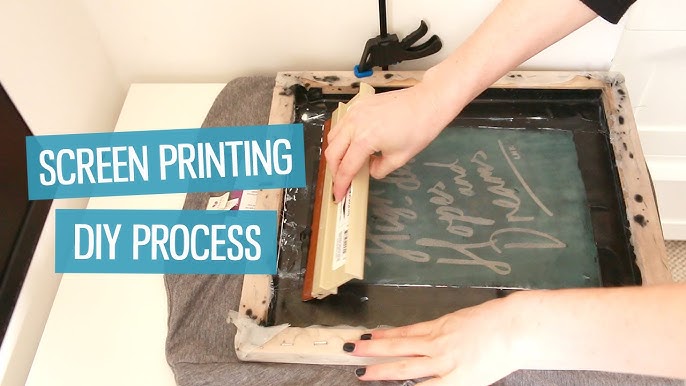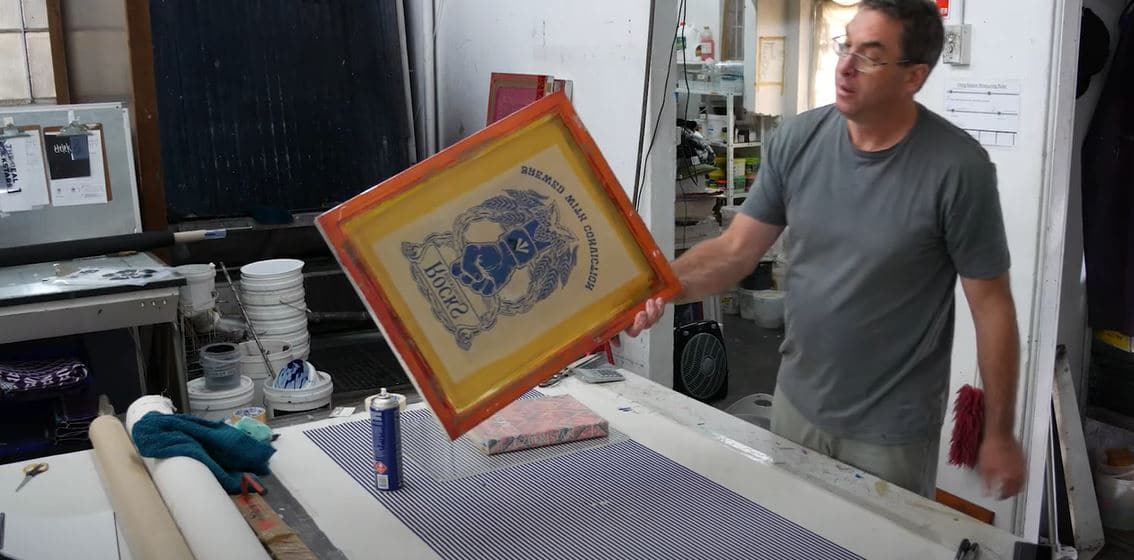ChatGPT said: Step-by-step guide to ordering with 10:9 Design Abilene
The Important Guide to Comprehending Screen Printing and Its Versatile Uses
Screen printing has a rich history that dates back to old times, evolving into an advanced method made use of across different industries today. This guide checks out the ins and outs of the screen printing procedure, detailing its applications in advertising and marketing, fashion, and home design - 10:9 Design Screen Printing. Understanding these basics can open creative capacity for both industrial and creative projects. The adhering to areas will disclose vital tips and techniques to boost one's screen printing endeavors
The Background of Screen Printing
Screen printing has roots that map back centuries, its development mirrors the creative and technological advancements of various societies. Stemming in ancient China, the strategy was initially used for enhancing textiles and later infect Japan, where it came to be important to Ukiyo-e woodblock printing. The method shifted to Europe in the 18th century, where it acquired popularity among craftsmens and business printers. The creation of photo solution in the 20th century revolutionized screen printing, enabling even more complex styles and higher performance. Artists like Andy Warhol additionally drove its appeal, utilizing the medium to produce renowned jobs that blended commercialism and great art. By the late 20th century, screen printing had developed itself as a flexible strategy, employed in style, advertising and marketing, and fine art. Today, it remains to advance, integrating electronic technology and broadening its applications throughout various markets.
The Screen Printing Refine Explained
Screen printing changes imaginative visions into concrete layouts through a series of specific steps. At first, a picture is developed and then transferred onto a screen, typically made from great mesh fabric stretched over a structure. A light-sensitive solution is related to the screen, which is subjected to light, setting in locations not covered by the image. After rinsing the unhardened solution, a stencil is created.
Next off, the screen is put over the substratum, whether it be fabric, paper, or an additional product. Ink is then pushed through the open locations of the pattern making use of a squeegee, transferring the style onto the substrate below. This process can be duplicated for numerous shades, needing separate displays for every color. The printed item is healed utilizing warm to guarantee the ink adheres properly, resulting in a durable, dynamic style prepared for use.
Sorts Of Screen Printing Techniques

Additionally, specialty methods, such as discharge screen printing, eliminate dye from the material to develop softer prints, while aluminum foil screen printing uses metal aluminum foil to accomplish a glossy coating (10:9 Design Screen Printing Texas). Each method offers distinctive characteristics, satisfying different creative needs and production ranges, inevitably broadening the possibilities within the screen printing domain name
Applications of Screen Printing in Different Industries

In addition, the signs and marketing industries utilize screen printing for creating attractive display screens and banners. This method allows for bold colors and elaborate styles that catch focus. In electronics, screen printing is utilized for using conductive inks to circuit card, crucial for part links. Moreover, the home decoration sector accepts screen printing to generate distinct layouts on textiles and wall surface art. On the whole, screen printing functions as a vital tool throughout varied fields, boosting items with customized and aesthetically enticing graphics.
Tips for Successful Screen Printing Projects
While undertaking a screen printing job, cautious attention to detail can significantly boost the final end result. Selecting top notch materials is vital; this consists of the screen, inks, and substrates. Utilizing suitable mesh matters can affect ink deposition and information resolution. Prep work is just as essential; detailed cleaning of screens and proper direct exposure times assure crisp prints.
Next, accurate enrollment is vital for multi-color prints. Making use of placement tools can help attain precise layering. Additionally, testing prints on scrap products before manufacturing aids recognize potential issues without losing sources.

Often Asked Concerns
What Products Are Finest for Screen Printing on Fabric?
Cotton and polyester blends are excellent for screen printing on fabric because of their durability and ink absorption. Furthermore, specialized materials like silk or canvas can generate unique structures and coatings, enhancing the general layout top quality.
How Do I Clean and Maintain Screen Printing Tools?
To cleanse and maintain screen printing devices, one need to routinely wash displays with ideal solvents, evaluate squeegees for wear, lubricate moving parts, and store all items in a completely dry, dust-free setting to lengthen their lifespan.
What Are the Ecological Influences of Screen Printing?
Screen printing can have significant ecological impacts, including chemical waste from inks and solvents, water usage during cleaning procedures, and power intake. Lasting practices and click here environment-friendly products are crucial for minimizing these negative results.
Can Screen Printing Be Done in the house Effectively?
Screen printing can be efficiently done at home with the best materials and techniques. Enthusiasts can develop top quality prints, though success depends upon their skill degree, tools, and understanding of the procedure included.
What Are the Costs Linked With Beginning a Screen Printing Company?

Beginning a screen printing company involves prices for equipment, products, and work area. First expenditures normally range from a couple of hundred to a number of thousand dollars, depending upon the scale, high quality of machinery, and wanted production ability.
Screen printing has a rich background that dates back to old times, evolving right into a sophisticated strategy used throughout various markets today. An additional technique, rotating screen printing, employs cylindrical displays, promoting continuous printing on textile rolls, consequently boosting performance for large productions. In addition, specialty methods, such as discharge screen printing, remove dye from the fabric to develop softer prints, while foil screen printing uses metal aluminum foil to accomplish a glossy coating. In the style industry, screen printing is commonly utilized to produce vivid designs on apparel, making it possible for brands to display their unique styles. Cotton and polyester blends are excellent for screen printing on material due to their sturdiness and ink absorption.